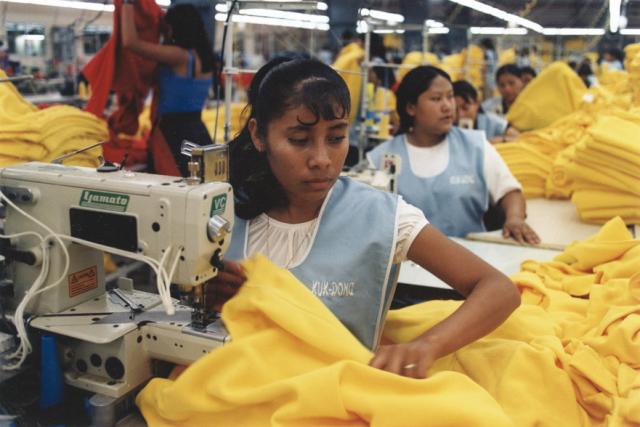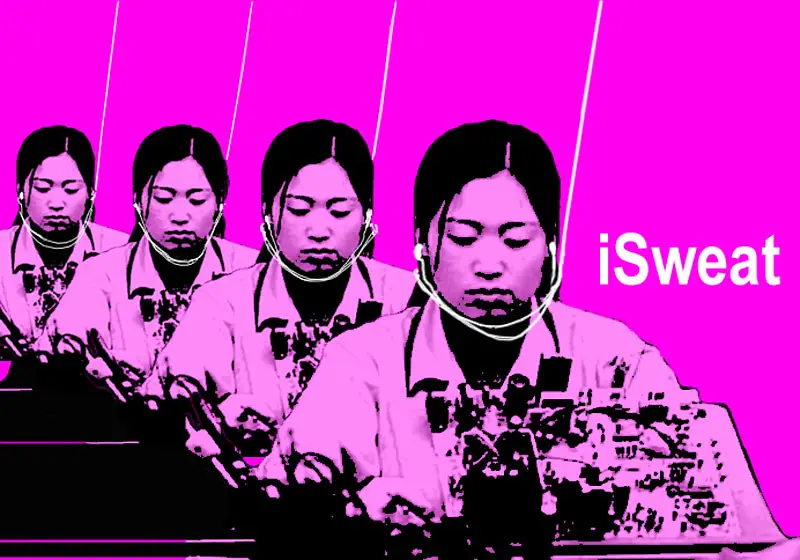Sweatshops typically operate in unregulated circumstances where workers may suffer from poor wages, unsafe working conditions, and minimal benefits. Factories, on the other hand, are often regulated and provide better wages and a safer working environment for their employees.
Sweatshops Vs. Factory – Key differences
(Photo by marissaorton on Flickr)

There are a few key differences between sweatshops and factories. First, sweatshops typically employ workers for very low wages and often do not provide any benefits. Second, working conditions in sweatshops are often very poor, with long hours and little to no break time. Additionally, workers in sweatshops are often not able to unionize or negotiate better working conditions. Finally, the products produced in sweatshops are often of lower quality than those produced in factories.
Sweatshops are often unlicensed and unregulated, which means that they may not meet even the most basic safety standards. Additionally, workers in sweatshops are usually paid very little – sometimes less than minimum wage – and they often work long hours with no overtime pay.
What are examples of factories?
Factories are places where people work to produce goods and services. They can be small businesses that employ a few workers, or large businesses that employ thousands of workers. Some factories produce only one type of product, while others may produce a variety of products.
Do sweatshops help the poor?
Sweatshops have often been criticized for their poor working conditions, long hours, and low pay. However, some argue that sweatshops actually help the poor by providing them with jobs that offer a better standard of living than they would otherwise have access to.
In developing countries, sweatshops are often the only source of employment available to many people. While the working conditions in sweatshops may not be ideal, they typically offer higher wages than other jobs in the area. In addition, working in a sweatshop can provide workers with valuable skills and experience that can help them get better-paying jobs in the future.
Critics argue that the benefits of working in a sweatshop are outweighed by the negatives. They point to the long hours and low pay as evidence that sweatshops exploit workers rather than help them. In addition, critics say that companies who use sweat labor are contributing to poverty and inequality in developing countries.
Ultimately, whether or not sweatshops help the poor is a complex question with no easy answer. There are pros and cons to working in a sweat shop, and it ultimately depends on the individual situation.
Why do companies use sweatshop?
There are a few reasons why companies might use sweatshops to produce their goods.
- It can be cheaper to operate a sweatshop than a factory.
- Sweatshops often have fewer regulation and oversight than factories, so companies can get away with more in terms of working conditions and wages.
- The workers in sweatshops are often desperate for any kind of work, so they are less likely to speak out or unionize.
Of course, there are many downsides to using sweatshops as well. The working conditions are often horrible, with long hours, little rest, and dangerous conditions. The pay is also very low, which can make it hard for workers to support themselves or their families. And because there is often no regulation or oversight, companies can easily get away with abuse or mistreatment of workers.
Which companies still use sweatshops?
(Photo by marissaorton on Flickr)

Sadly, there are still many companies that use sweatshops to produce their goods. In some cases, it’s because they can get away with it – particularly if the Sweatshop is located in a developing country where laws and regulations are not as strict. In other cases, companies may not be intentionally using sweatshops, but they’re turning a blind eye to the poor working conditions in their suppliers’ factories.
Some of the biggest offenders when it comes to using sweatshops include fast fashion brands as well as major retailers. These companies have been repeatedly accused of using suppliers that operate sweatshops, although they all deny these claims.
Why did sweatshops start?
When the Industrial Revolution first began, factories were few and far between. Most goods were produced in small shops by hand or with simple tools. As factories began to spring up, they offered a new way of production that was faster and could create more goods than ever before.
However, these early factories were often dark, dirty, and dangerous places to work. They were also staffed primarily by children and women, who were paid very little for their labor. These conditions led to the rise of the sweatshop.
Sweatshops are small factories or workshops in which workers are employed under harsh conditions and paid very little for their labor. These conditions may include long hours, exposure to hazardous materials, minimal breaks, and no benefits. In some cases, workers are even held captive in the sweatshop in order to keep them working.
While sweatshops still exist today, they are not as common as they once were. This is due in part to increased regulation and enforcement of labor laws, as well as public pressure on companies to improve working conditions in their supply chains.
What are the three characteristics of a factory?
- A factory is a large and often imposing building, usually located in an industrial area.
- A factory typically contains heavy machinery and equipment, and is used for manufacturing products or assembling components.
- A factory usually has a large workforce, which may be divided into different departments or assembly line workers.
Where are sweatshops most common?
Sweatshops are most common in countries with little to no regulation of labor standards and a high prevalence of poverty. This allows companies to get away with paying workers very low wages, often below minimum wage or even just a few dollars per day. As a result, workers in these countries are forced to work long hours for little pay in order to make ends meet.
According to the International Labor Organization, there are an estimated 21 million people working in sweatshops around the world. The vast majority of them are women and girls, who make up 85% of the sweatshop workforce. Sweatshops are most prevalent in Asia, where an estimated 90% of the world’s sweatshop workers reside. Other regions where sweatshops are common include Latin America, Africa, and the Middle East.
Are sweatshops illegal?
There is no definitive answer to this question as it depends on the country in which the sweatshop is located. In some countries, such as the United States, there are laws that regulate working conditions and prohibit certain types of exploitation, but these laws are not always enforced. In other countries, there may be no laws regulating working conditions or protecting workers’ rights, making sweatshops legal.
Sweatshops are often hidden from public view, operating in secret or in remote locations. This makes it difficult to know exactly how many sweatshops exist and where they are located. However, it is estimated that there are tens of thousands of sweatshops around the world, employing millions of workers.
How do you stop sweatshops?
There are a few ways to stop sweatshops. One way is to support companies that have made a commitment to not use sweatshops. Another way is to lobby for laws and regulations that would make it illegal to operate a sweatshop. Finally, you can support organizations that work to improve conditions in factories around the world.
Featured Image by – Photo by Jayden Sun on Unsplash








